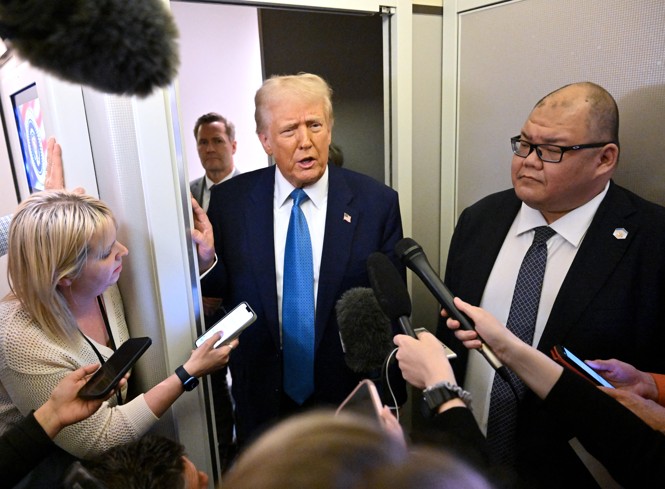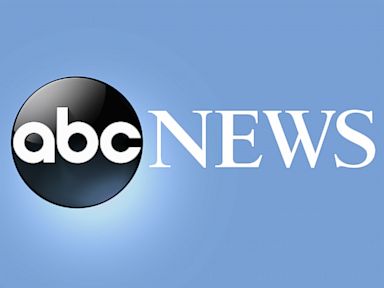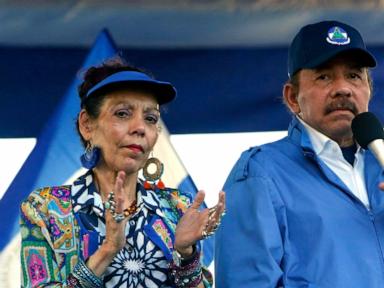ARTICLE AD BOX
Across the press-briefing room in the West Wing, past the lectern where the beaming blond press secretary, Karoline Leavitt, admonishes members of the meddlesome press, behind a blue sliding door, past a bored-looking security guard, and inside a small, cluttered office, White House Communications Director Steven Cheung is on X, trolling his boss’s enemies.
“The camera can’t stabilize because the watermelon head is wobbling precariously on a pencil neck,” he wrote on March 13, above a video of Representative Adam Schiff of California. Watching CNN’s Erin Burnett talk about economics, he posted on March 10, “is like watching a donkey try to solve a Rubix [sic] Cube.”
This is standard internet talk for Cheung, who, during the 2024 presidential primary, publicly referred to Florida Governor Ron DeSantis as a “desperate eunuch” and asked why he would “cuck himself” before the country. But it’s a new tone for a White House communications director.
Although Cheung is more of a back-office guy, you may have caught glimpses of him last spring, escorting the would-be president in and out of Alvin Bragg’s downtown-Manhattan courtroom. Not particularly tall, he is rotund, with a shiny, egg-shaped head and a deep wrinkle etched above his brow. Observers have noted that, standing next to Donald Trump, Cheung (who is ethnically Chinese) looks a bit like Oddjob, the archvillain’s silent but menacing sidekick in the 1964 James Bond film, Goldfinger. Cheung happily made the comparison himself last week, when he reposted a photo of himself wearing a black bowler hat—Oddjob’s signature concealed weapon.
Cheung worked in communications for the Ultimate Fighting Championship before joining the 2016 Trump campaign—and he brought along an apparently boundless appetite for combat. Now 42, he has stuck with the president for close to a decade in a variety of roles that have spanned the turbulence of the Access Hollywood tape, the backbiting of the first administration, and the wilderness period that followed Trump’s 2020 election loss. For much of that time, Cheung kept a low profile. That has changed. And by all accounts, Trump loves him. The president has referred to Cheung as his “sumo wrestler,” and commented proudly on the size of Cheung’s hands. (“Look at those hands. You’re in good shape if he’s with you,” he once reportedly said.)
The paradox of Cheung is that, behind the scenes, the president’s attack dog is friendly, and peppers his conversations with generous belly laughs and the occasional “hoo boy.” In interviews, nearly a dozen reporters from outlets across the ideological spectrum described him to me as a uniquely pleasant and straightforward aide in Trump's mostly toxic orbit. The Cheungian approach to communications leans deep into this paradox. He will engage journalists in pleasant chitchat, argue good-naturedly about the finer points of a story, and then fire off a public insult. “These sources are full of shit and have no idea what they are talking about,” Cheung said in a story by the journalist Tara Palmeri, who writes the Red Letter Substack. But Palmeri described Cheung to me as generally calm and reasonable.
In Trump’s first administration, constant warring among aides resulted in sloppy, inconsistent messaging and a steady flow of leaks. But the staffers in Trump 2.0 appear, at least for now, to be more united—in ideology as well as attitude. They have no use for norms and politesse. American political language, Cheung told me in an interview earlier this month, “was due for a supercharge.” And under his leadership, the comms team is engaged in a campaign of relentless—often performative—hostility. “He has a skill that I don’t, which is to come up with the funniest, most aggressive one-liners you’ve ever heard, in seconds,” Leavitt told me.
Trump’s incursion against American institutions is now benefiting from a communications operation that is more effective—and far more withering. Cheung has been the architect of this new messaging era, bringing all that is authentically vulgar, unflinching, and cruel about his boss to official White House statements. “In the first Trump term, Cheung was not a big player at all,” Palmeri told me. “Now he’s the voice of Trump.”
[Tom Nichols: Trump’s titushky]
When I met Cheung recently, I found him standing outside his office, chatting happily with a pair of reporters. That afternoon, Elon Musk would join the president as he shopped for a brand-new Tesla from a selection of vehicles arranged around the White House’s South Portico like gifts in an episode of My Super Sweet 16. One of the reporters was wondering, as reporters tend to do, about the ethics of it all. But Cheung’s excitement would not be dimmed. “You guys are in for a surprise,” he told them. “Did the White House counsel approve staff participation in the endorsement of a private product?” the reporter asked. Cheung rolled his eyes but seemed to be enjoying himself as the two went back and forth. Eventually, the reporters shuffled away with a statement from Cheung that skirted the ethical issue. Smiling, Cheung ushered me into his office.
 Donald Trump and White House Communications Director Steven Cheung on board Air Force One. Source: Roberto Schmidt / Getty.
Donald Trump and White House Communications Director Steven Cheung on board Air Force One. Source: Roberto Schmidt / Getty.
I’d heard about his reputation as a nice guy. Even so, I was surprised by Cheung’s soft-spokenness and plastic-rimmed Tina Fey glasses—a very thoughtful look for a henchman. In one corner of his office, a flatscreen TV played four news channels at once (CNN, Fox, MSNBC, and Newsmax); in another corner sat a red cap embroidered with the words TRUMP WAS RIGHT ABOUT EVERYTHING. On the walls, a few gold frames hung empty, because Cheung has yet to receive the enlargements of his favorite campaign-trail photos. There are no personal pictures in sight, because he has no personal life. Cheung told me he has no time for that.
Cheung grew up in Sacramento, California, where his parents settled after they emigrated from Japan and Hong Kong in the 1960s. They’re all still close, Cheung says, but his family never actually cared much about politics, conservative or liberal, until he started working for Trump. Growing up, Cheung’s older brother, Stanley, was always the gifted one. He now works as an electrical engineer. Steven spent three years at California State University at Sacramento, but did not graduate. Now he has a job in the West Wing, and a plaque signed by Trump hangs in his parents’ home. “I had no idea,” he told me, gesturing around his office, “this is where life would take me.”
During college, Cheung interned in then-Governor Arnold Schwarzenegger’s speechwriting office; after dropping out of school, he worked on a string of political campaigns, including John McCain’s 2008 presidential bid. In 2009, Cheung wanted a job on the Republican underdog Steve Poizner’s campaign for California governor so much that he volunteered for two weeks before being hired as director of online messaging. “He’s an animal when it comes to hard work,” Jim Bognet, Poizner’s former campaign manager, told me. Cheung launched his own political-consulting company, Solgence, and worked on rapid response for Republican Senate candidates in Nevada and Texas.
Then, in 2013, Cheung got the job that would become Trumpworld lore. The Ultimate Fighting Championship hired Cheung as its director of communications and public affairs—bringing him on, in part, to lobby for the legalization of mixed-martial-arts fighting in New York. The UFC had recently evolved from a niche pay-per-view service into a recognized sport with mass-market appeal. This was the era of Conor McGregor and Ronda Rousey, and the franchise’s brand was all about vulgarity and social taboo. Nobody did more for the sport than CEO Dana White, whose cultivated machismo and plainspokenness had engendered trust among viewers.
Cheung left the UFC after three years, when the company was sold. He climbed aboard Trump’s chaotic train in 2016, as manager of rapid response, and continued to abide by White’s governing philosophy: “Be aggressive all the time—you can’t relent,” Cheung told me. “Bringing that mindset into politics,” he added, “I don’t think anyone’s really done that before.”
Trump still makes occasional appearances at UFC fights, and Cheung delights in showing him off. “When he walks in back of Trump in his posse,” the former Trump strategist Steve Bannon told me, “he always gets that little smile.” On St. Patrick’s Day this year, when McGregor visited the Oval Office, Cheung posted a photo of their meeting commemorating the collision of his two worlds. The caption: “Past life 🤝 Current life.”
[From the July/August 2022 issue: American Rasputin]
Given that Cheung was one of the few Trump staffers with experience on a presidential campaign, he became a kind of political sage on the 14th floor of Trump Tower. Other aides often sought advice from Cheung, who had demonstrated a preternatural ability to remain calm throughout a campaign defined, in large part, by scandal. “You’re hired to do a job,” he told me, by way of explanation. “And you need to execute.”
After Trump’s surprise win in November 2016, Cheung joined the White House team as a special assistant to the president and as the assistant communications director. Two factions soon formed in the West Wing: the first, a renegade MAGA coalition mostly aligned with Bannon; the second, a group of establishment GOP holdovers allied with Chief of Staff Reince Priebus. The infighting was constant and vicious, with each group trying to shiv the other in the press. The leaky mess was a reporter’s dream.
Because he’d come from the campaign, Cheung was definitely more of a Bannon guy, people told me. But the internal sniping left him largely unscathed. “He has among the broadest ranges of relationships across Trump’s orbit,” one White House reporter, who requested anonymity to speak candidly about his working relationship with Cheung, told me. “He’s the demilitarized zone of the private Trump world, which might surprise people, given his public persona.”
Early on, Bannon referred to Cheung and a few of the other younger men in the White House as his “killers” and instructed them to create a plan to “weaponize comms,” one friend of Cheung’s, who worked in the first Trump administration and requested anonymity in order to speak frankly, told me, by bringing a more aggressive posture toward critical coverage. But by early summer 2018, Chief of Staff John Kelly was cleaning house—and Cheung, whom Kelly distrusted, was swept out. But Cheung was happy to land back on the campaign side, where the action was, consulting for Trump.
Cheung helped with Trump’s debate preparation in 2020, and the Republican National Convention. But Cheung’s contract was up on the day after Trump’s loss to Joe Biden in November. So he was not involved in the “Stop the Steal” madness that followed, and he was not in the White House on January 6, 2021, when rioters broke into the U.S. Capitol. Publicly, Cheung has said that people know “who really won the election” in 2020, and he has defended Trump’s assertion that January 6 was “a day of love.” But he declined to comment about either in our interview.
During the Biden presidency, Cheung spent most of his time working on crisis communications for corporate clients, and consulting on two strikingly different political bids: Caitlyn Jenner’s campaign for California governor, and the Senate run of disgraced Missouri Governor Eric Greitens, who’d resigned from office after being accused of sexual misconduct.
Soon enough, Cheung found his way back to Trump. Just ahead of the midterms, Susie Wiles, Trump’s campaign manager, hired Cheung to work for MAGA Inc., a new political-action committee that would become the staff feeder for Trump’s third presidential campaign. This was a dark period for Trump, who had left office in disgrace and was now embroiled in several high-profile court cases. It was not exactly an ideal time to attach one’s political career to the Trump name. But Cheung joined the campaign anyway.
“You gotta finish the story,” Cheung told me when I asked what made him do it. “You ride it ’til the wheels fall off.” Wiles corporatized the campaign team, adding the structure it had previously lacked. Then she unleashed Cheung on the primary contest.
Starting in late summer 2023, Cheung sent out a series of ruthless campaign statements he called the “Kiss of Death” countdown, after a Republican consultant said that Trump’s principal rival for the GOP nomination, Florida Governor Ron DeSantis, had “60 days to beat Trump.” The emails often implied that DeSantis, who sometimes appeared to be wearing lifts, enjoyed dressing like a woman. “Ron shuffled his feet and gingerly walked across the debate set like a 10 year old girl who had just raided her mom’s closet and discovered heels for the first time,” Cheung wrote after the October debate.
Most reporters who cover Trump are familiar with the publicly rude, privately nice dynamic that many MAGA operatives employ. But the obnoxious emails were especially jarring coming from Cheung. “He’s like a giant teddy bear,” one former White House correspondent, who requested anonymity because she feared online attacks from Cheung, told me.
It was Trump’s idea, Cheung told me, to fly the Trump-campaign jet low over the fairgrounds before his arrival in Des Moines, Iowa. Giddy, Cheung gave the reporters covering DeSantis on the ground a five-minute warning. And just as DeSantis took his turn in the spotlight, flipping pork burgers in front of a crowd, Trump’s plane flew overhead and stole the moment.
By early 2024, DeSantis was out of the race, and the action had shifted to a Lower Manhattan court, where Trump was on trial for paying hush money to a porn star, and where Cheung could be found loitering on the sidelines, like some kind of bouncer-lawyer hybrid. “Make no mistake, this is election interference of the highest order,” he barked in a rare on-camera appearance. “Crooked Joe Biden and his campaign are in complete freak-out mode.”
[Adam Serwer: The cruelty is the point]
The White House communications team has adopted the campaign’s “battle rhythm,” said Leavitt, who is close to Cheung, figuratively, but also literally, as his office neighbor in the West Wing. And this unified team is now waging war on the press.
The administration has banned the Associated Press from covering events in the Oval Office, because of the wire service’s refusal to use the administration’s preferred term “Gulf of America,” and it has wrested control of the White House press pool from the independent White House Correspondents’ Association. It has also granted White House access to many deferential outlets, including Bannon’s podcast and the sycophantic Real America’s Voice network. But Cheung prickled when I questioned whether the team’s ultimate objective is to curtail critical press coverage. “Ask any reporter who’s covered the campaign how much access we’ve given to them,” he said. “We’ve gone out of our way to expand access.” (True, Trump himself takes questions all the time, but the White House has also attacked and punished outlets for coverage it doesn’t like.)
Despite that insistence, Cheung has now realized Bannon’s dream of weaponized comms, ushering in a new era of political messaging in Washington. Gone are the mild stumbles of “covfefe” and the meme-ry of Sean Spicer retreating into the White House shrubbery. Trump has reverted to his own killer instincts, assailing his enemies with all-caps Truth Social rants. Don’t expect anyone to rein him in. “When times get tough, you don’t take a step back; you double down,” Cheung said, when I asked whether Trump ever goes too far. “And if that doesn’t work, you triple down.”
The Cheungian tactic of instant escalation is, for him and his allies, a win-win strategy: It helps quench the base’s thirst for lib-owning—and gets a ton of eyeballs. “If Cheung calls Tim Walz a cuck versus if he says, ‘Walz is incorrect because of X, Y, and Z,’ which one is going to get more attention?” a senior White House official, who asked for anonymity in order to speak candidly, told me. The method is brutal but, Cheung and his allies believe, effective.
The logical end point of this mindset is the dehumanization of not only one’s opponents, but anyone who isn’t a loud loyalist. “From a broader, 35,000-foot view, is this healthy?” another friend of Cheung’s from the first Trump White House, who similarly requested anonymity, told me. “I don’t know. I don’t think it’s great.”
This shock-and-awe style that has come to define communication in the second Trump era seems to draw no distinction between aggressive trolling of political opponents and outright cruelty to other human beings. In a video shared by the White House last month, immigration agents put men in shackles, and marched them up a gangway onto a waiting plane. The video, which was made by the White House’s digital team and approved by Cheung, is captioned “ASMR: Illegal Alien Deportation Flight,” implying that the sight and sound of people being deported is pleasing.
The post received 200 million views and 886,000 engagements across X and Instagram, Cheung told me. He sounded proud.
.png)
 1 day ago
1
1 day ago
1








 English (US)
English (US)